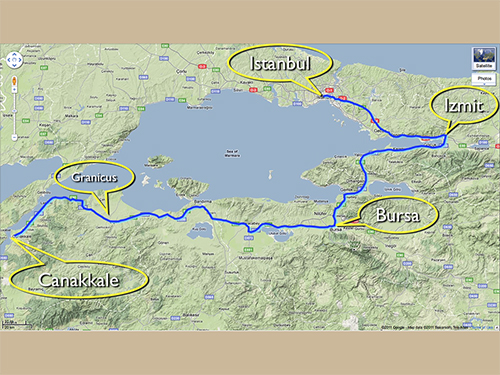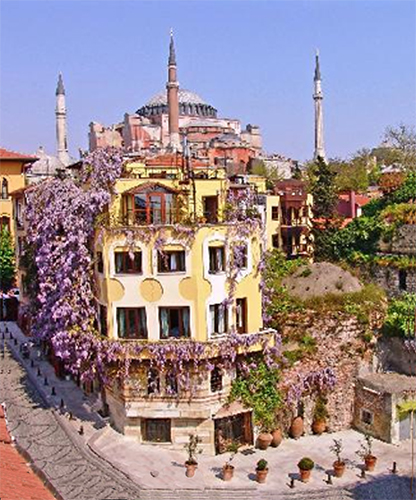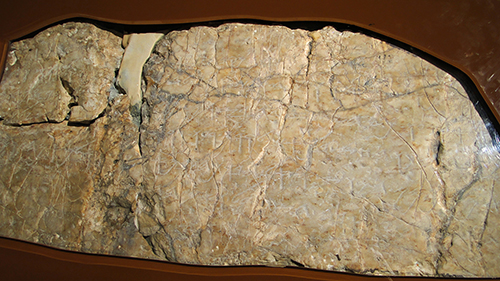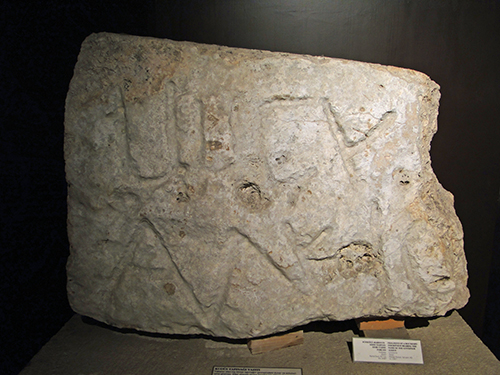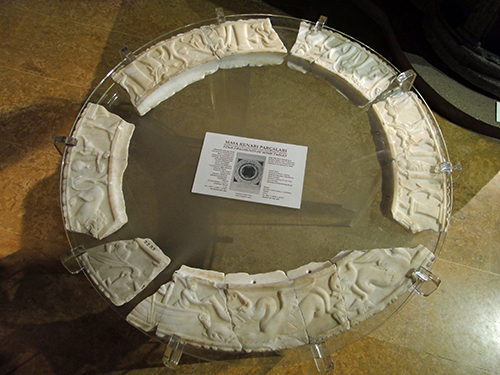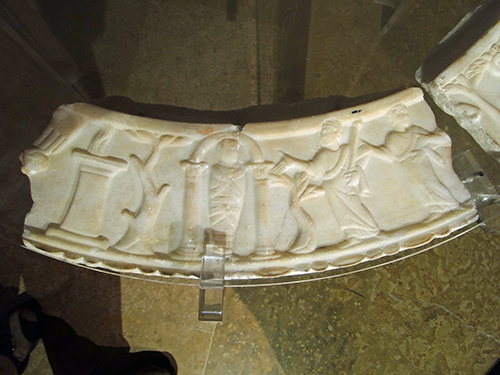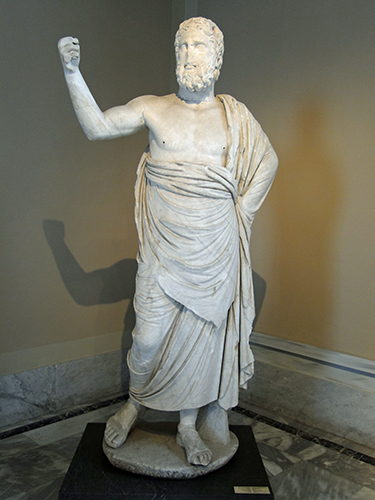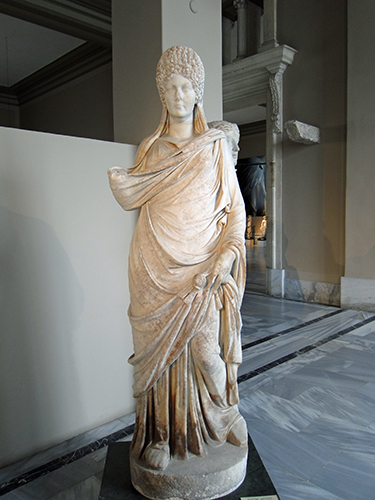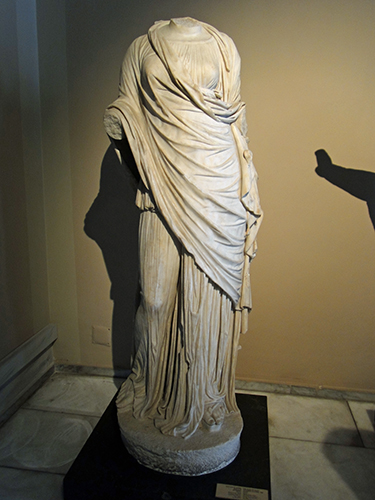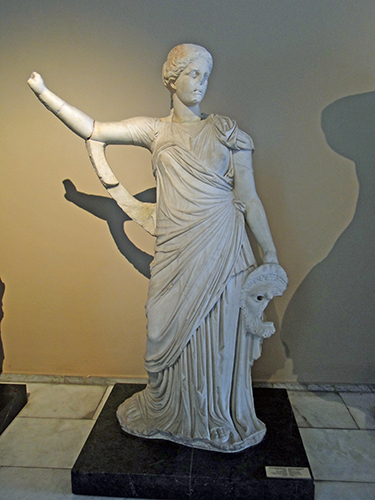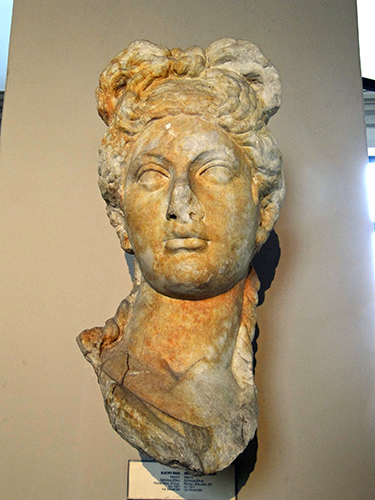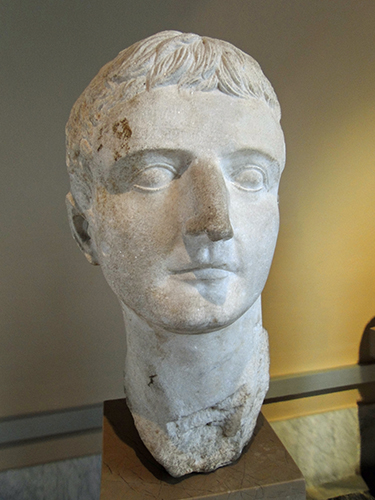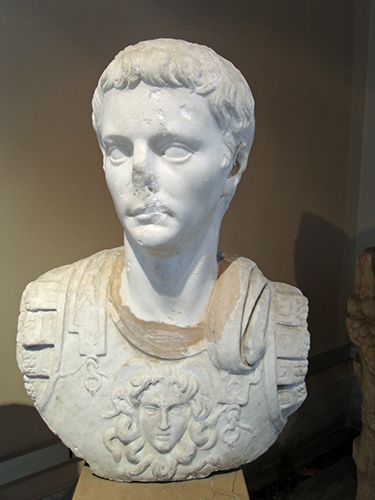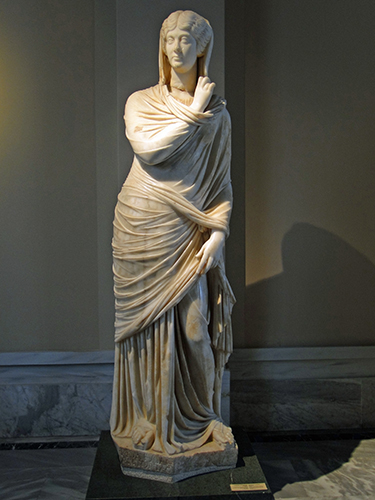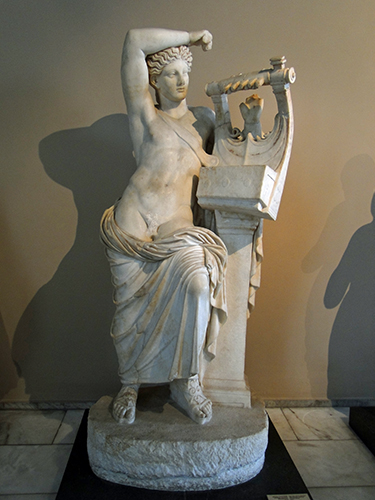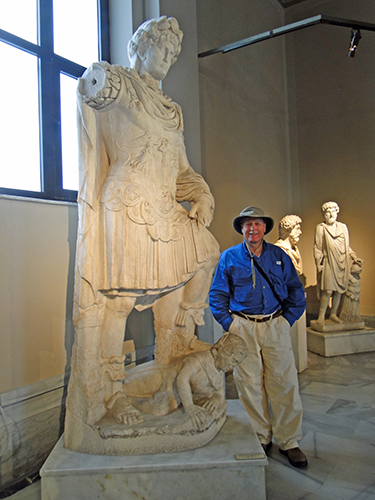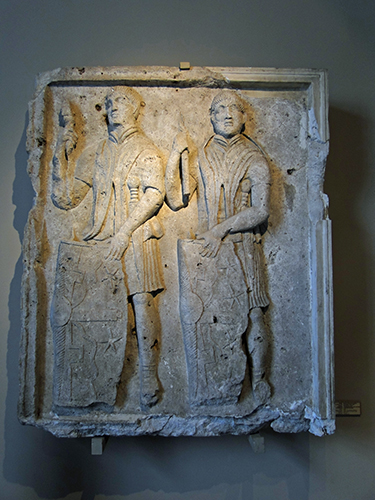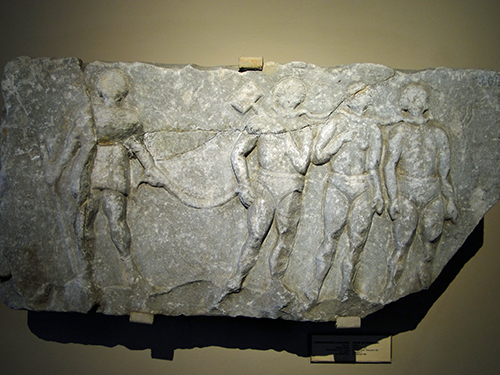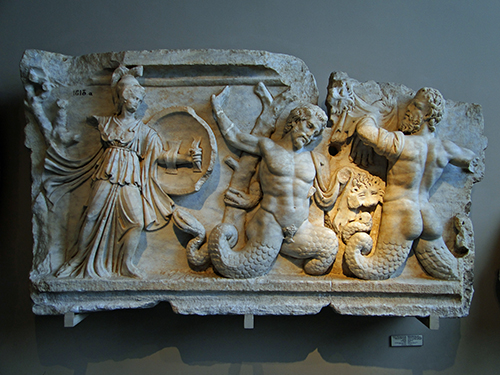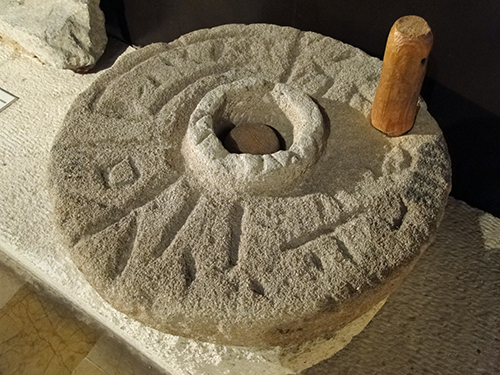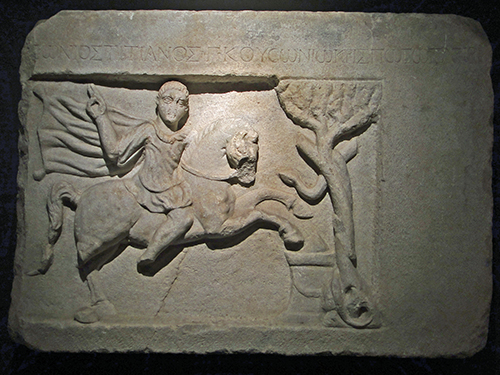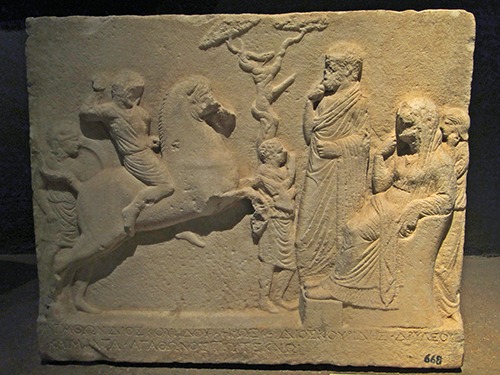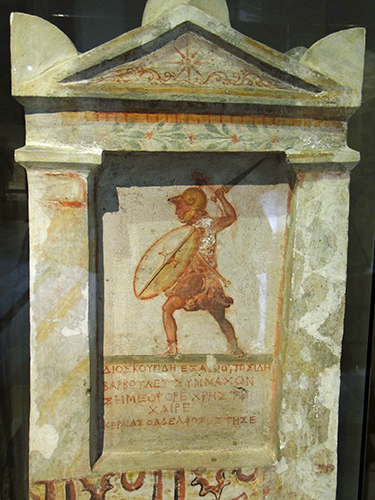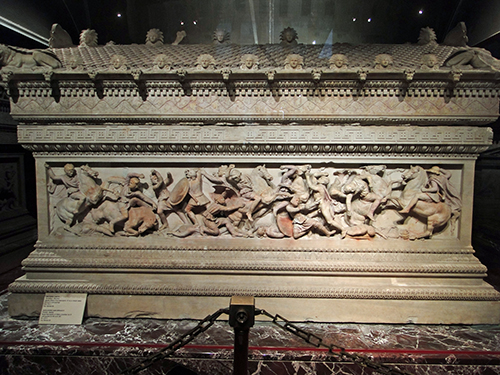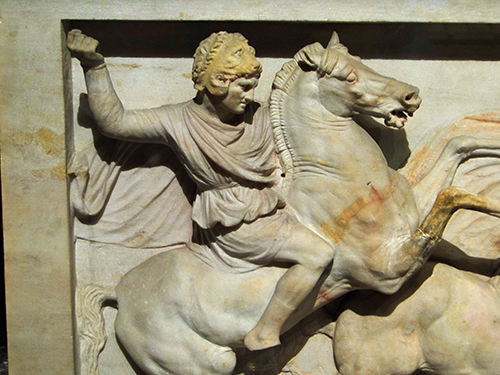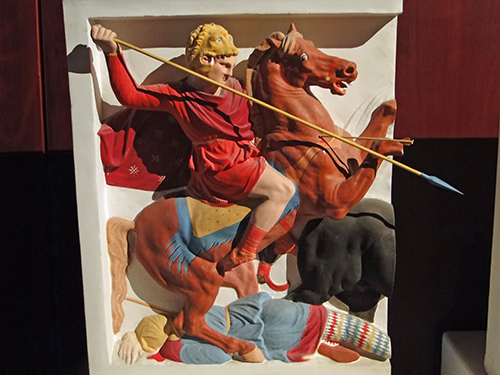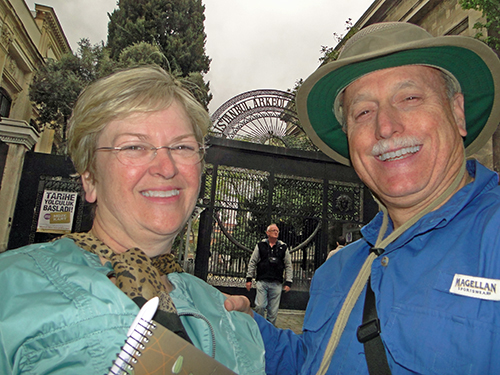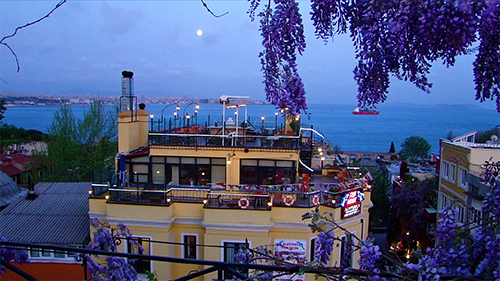April 27, 2010 (Tuesday)
Canakkale. Jerry woke me up at 4:45 am so we can get on the road. We took our bags to the car and came back for breakfast, which was supposed to be at 6 am, but we find out has been changed to later in the morning at the insistence of the Koreans. So, we skip breakfast and get on the road at 5:31 am. The day is rainy and messy. I really don’t know how Jerry has stood all this driving. I know I never could do the job. I probably would have pulled to the side of the road the first day and called Avis to pick up the car.
We pass close by the site of the Battle of Granicus (334 B.C.) near modern Biga, Turkey, where Alexander the Great defeated the Persians in the first of three famous battles with the Persians on his way to conquering the world. Unfortunately, we do not have time to stop for a picture or two. Our drive pretty much follows the southern shore of the Marmara Sea. We have to catch a different highway at Bursa and then another one later at Izmit. Eventually, seven and a half hours later (!), we arrive at the International Airport in Istanbul about 1:00 PM. We did not even stop for lunch.
As we got into the terrible crush of Istanbul traffic in this city where millions live, we easily could have missed the necessary turns, but we didn’t. While I usually am the one watching out for and finding road signs and directions where to go, this time we made our destination only because Jerry barely happened to catch two important signs out of his peripheral vision as they raced by for necessary changes in our route toward the International Airport. Even catching these two important signs, however, by the thinnest of margins, we still had the weirdest thing happen as we were making our way into Istanbul.
Istanbul Mystery. We get to the International Airport by miracle actually. Here’s what happened, but we still don’t know what really happened. We entered into town on D100. This superhighway is like a massive Interstate with six lanes of traffic each way, going at Interstate speeds, almost bumper to bumper. We are just humming along this superhighway in one of the middle lanes, when, ultimately—in some mysterious way, completely unfathomable to us how—the speed of the lane we are in gets steadily slower, and the other lanes on either side of us just disappear. Jerry asked, “What’s happening?” to which I only could respond, “I have no idea.” He then asked, “Well, where is this thing taking us? Where are we? I thought we were in the middle of a superhighway only a minute ago!” “Me too!” I exclaimed. We are going downhill and getting slower and slower. Eventually, the road we are on just simply dead ends at the bottom of the mountainside at the wharf right on the water’s edge! How did we move in less than a minute or two from Interstate-like speeds to an absolute dead end at the water’s edge? I have no clue. What to do now?
Never fear! Jerry’s unbelievable radar kicked in. Like he had been on this side route a hundred times, he got a visual fix on the superhighway, which we could see way up above us at the top of the mountain curving its way to the major bridge over the Bosphorus Straights. He found his way, somehow, weaving back up the mountainside thorough busy traffic, stoplights, one-way streets, and the like, without one wrong turn or having to retrace our steps to start over—right to an egress getting us perfectly back onto to the bridge we needed to get across the Bosphoros Straights, just as if he knew the way! Amazing! Praise God! [But, we still do not know to this day what happened that put us at the bottom of the mountain at the water’s edge when we were in the middle of a superhighway—Jerry.]
International Airport. Now that we are back again in that traffic carrying millions of people millions of places, we still have a tough time following all signs and maneuvering correctly for the right lanes and turns to get to the airport. We have to get to the airport to return the car. We do not know what we will be facing at the car rental place, as we have to return a vehicle that has somewhat hidden damage to the front bumper and clear damage on the right side rear door, all happening that terrible time arriving and leaving Antalya. We plan to take a taxi to the hotel after returning the car, so we do not have to fool with returning the rental car (with its unknown time frame for dealing with the return) and trying to catch our plane tomorrow morning early. The airport is confusing because the car rental return is on the 3rd floor of a parking deck without anywhere to park the car! We pull up to what seemed to be the Avis area, and several men came out of the Avis booth and motioned for us to park behind other cars in a line, so we do. Then, 5 or 6 men start walking around the car, pointing to the dent and front bumper, waving their arms and talking Turkish. We have car rental insurance, but we are not sure how they work all this in Turkey. Finally, one man says, “is OK,” and then, pushing a form in front of Jerry, says, “sign,” so Jerry signed the paper, and that was that. We never heard from the rental company. All our worries and fretting during most of the trip over returning a damaged rental car are gone in a moment. Having returned the rental car successfully, we’re now off to find a taxi, which also is confusing. A couple of nice guys sense our predicament and help us find the taxi stand down an elevator at ground level.
Lost Treasure. We finally get to the taxi stand and Jerry notices that his Tarsus poster, which he was carrying in its cardboard tube under his arm, is missing, so he goes back up retracing his steps frantically to try to find the treasure, but to no avail. It’s gone. Disappeared. He’s so sad about losing that particular poster, because the girl at the Tarsus museum gave the print to him especially, pulling the artwork out of a closed case. The poster was a special commemorative limited edition of the Vatican’s millennial celebration of St. Paul in Tarsus. The girl behind the counter had seen how intense Jerry was about the museum artifacts that she had given him the poster as a special gift. Jerry was very touched by the gesture and was going to hang the poster proudly in his seminary office. He had carried the poster carefully everywhere all over Turkey for weeks, and now the prized limited-edition print is lost forever. He thinks he might have left the tube in the bathroom right before we took the elevator down.
Empress Zoe Hotel. After Jerry returns dejected with no poster, we continue to the taxi stand. Two taxi drivers get into a heated exchange about who is next, that is, who gets to take us. What a rig-a-ma-roll! Reminds us of the two taxis that showed up in front of our hotel in Berlin, Germany the morning we were going to the airport to fly to Turkey who argued who was going to get the fare. Finally, we are on the long drive to the hotel. When the taxi driver goes past our Empress Zoe Hotel, I have to tell him to go back. Very good thing that I already knew what the hotel looked like, since we had stayed there before on our previous trip to Istanbul. The hotel is right in the middle of things. The famous Blue Mosque can be seen immediately in the background of the hotel.
We check in. Our room is on the top floor this time—quite a climb of narrow, spiral stairs! We get settled in quickly, because we need to get to the Istanbul Archeological Museum before the place closes for the day.
Istanbul Archeological Museum. We walk the few blocks to the Istanbul Archeological Museum, precisely why we love the Empress Zoe Hotel. We go through the museum and search for the Caesarea Pontius Pilot inscription, but do not find the stone that is our only historical documentation independent of literary sources of the existence of Pontius Pilate. We do find lots of very interesting artifacts, including inscriptions, such as the Hezekiah inscription and an inscription from the temple in Jerusalem. After finishing the Archeological Museum, we go across the museum plaza to the other building to take a quick view of the Ancient Asia Museum, wondering if perhaps the Caesarea inscription might be there, but the inscription is not there either. Jerry now is wondering if his information is mistaken; he thinks the inscription actually might be housed somewhere in a museum in Jerusalem.
The museum holds an important Hebrew inscription taken from King Hezekiah’s tunnel dated from 716–687 B.C., built to access a water supply from the Gihon Spring to East Jerusalem’s Pool of Siloam. The inscription records the work on the tunnel and is one of the oldest Hebrew inscriptions of its kind using the Paleo-Hebrew alphabet.
Another inscription on limestone below dates from the 1st cent. A.D. and documents the prohibition against profaning the sanctity of the inner compound of the Jewish temple in Jerusalem. The inscription reads: No intruder is allowed in the courtyard and within the wall surrounding the temple. Whoever enters will invite death for himself. In the New Testament one can compare the mob riot against Paul when he was believed to have brought the Gentile Trophimus into the inner temple area (Acts 21:27–29) and Paul’s metaphor about breaking down the dividing wall between Jew and Gentile (Eph 2:11–14).
The following image shows a fragment of a 1st cent. A.D. boundary marker found in Gezer in Palestine. The inscription bears the name of a governor, Alkios.
Most fascinating was a round table whose outer circumference displayed a band of reliefs depicting various biblical scenes, such as Adam and Eve, Abraham offering Isaac, and Daniel in the lions den. One in particular that caught Jerry’s eye was a relief depicting Jesus raising Lazarus. The table hails from Laodicea about the 4th cent. A.D.
Statuary from various locations in Turkey were well represented. These included: the supreme god Zeus found in Pergamum dating 2nd cent. A.D.; a beautiful 2nd cent. A.D. statue of a woman from Aphrodisias; Polemeanus, proconsul of Asia from 106–107 A.D.; a 2nd cent. A.D. statue of Euterpe from the Bath of Faustina in Miletus and another similar statue of Euterpe from Miletus; also from Miletus was a statue of Melpomene, dated 2nd cent. A.D.; the head of a woman, taken from 2nd cent. A.D. Ephesus; the head of the emperor Tiberius (14–37 A.D.) from Pergamum; the head of the emperor Claudius (41–54) from Izmir; a beautiful 2nd cent. A.D. statue of Cornelia Antonio from Antioch of Pisidia; a 1st cent. A.D. statue of the goddess Athena from Manisa (ancient Magnesia); and a 2nd cent. A.D. statue of the god Apollo in the Greek “heroic” fashion from Miletus.
A colossal statue of the emperor Hadrian (117–138) illustrates the style of Roman imperial propaganda. Hadrian is depicted as larger than life. He is dressed with regal robe draping his neck and decked out with the imperial military cuirass. He stands triumphantly, with his boot on the neck of the vanquished enemy. The enemy is portrayed in a humiliating style as pigmy in size, forced down on the ground in submission, prostrate before the Roman general. So much for the consequences of opposing invincible Rome.
The relief below depicts Trajan’s (98–117) victory over the Dacians. The relief hails from modern-day Romania.
The relief below shows prisoners bound at the neck. The relief is 2nd–3rd cent. A.D. from Miletus.
The god Hercules depicted in the relief below dates to to the 2nd cent. A.D. and is a rare artifact from Iconium (cf. Paul’s first missionary journey, Acts 13:51–14:6).
Aphrodisias yields a beautiful 2nd cent. A,D. relief depicting the goddess Athena in her quarrel with Poseidon, god of the sea, over possession of Attica. The style is overtly imitative of the great Altar of Zeus in Pergamum.
The 2nd cent. A.D. marble carving below was found in Ephesus. The wonderful workmanship depicts Oceanus, a concept held by both Greeks and Romans of a world-ocean, or global river that supported all inhabitable lands. He was personified as Titan in Greek myth, and after Poseidon later came on the stage of the Greek gods, Oceanus was understood to rule over the unknown waters of the Atlantic, while Poseidon ruled the Mediterranean ocean.
The museum has some mosaics. The scenes presented are the typical fare. The scene below is a gladiator with spear. In the following relief is another gladiatorial scene showing the early morning “warm-up” fights with beasts of various kinds. One is reminded of Paul’s strong metaphor, “even if according to human ways I fought with beasts at Ephesus” (1 Cor 15:32).
The millstone was used for grinding meal. The one below is from Polymyra, Roman period. The diameter is about finger to elbow. One can imagine how heavy this stone is and then recall the statement of Jesus: But whoever should cause to stumble one of the least of these who believe in me would be better for that person that the millstone of a donkey be hung around the neck and thrown into the depths of the open sea (Matt 18:6).
Several gravestones caught Jerry’s eye that were from the early Roman period. The first one below is from Thessalonica, 1st cent. A.D., of a Gaeus Cousonios Cusipus. The following one also is from Thessalonica, 1st–2nd cent. A.D., of one named Agathon. A painted limestone grave marker from Sidon of Lebanon has this inscription: O D [illegible] of Pisidia–Balboura, son of Exabous, the standard bearer of the allied forces, good man, farewell. His brother Ceraios had this erected. The final image shows a finely executed relief from a 1st cent. B.C. tomb monument that was done for Tiberius Flavius Miccaulus, who was both a prefect and priest. The monument and its almost life-size relief is rather large and imposing and displays military dress and armor with great detail.
One of the most striking exhibits at the Istanbul Archeological Museum is the so-called “Tomb of Alexander.” This sarcophagus is not really the tomb of Alexander the Great, but probably was a tomb monument for one of his successors. Alexander the Great is depicted in the elaborate reliefs surrounding the outside of the tomb, and, hence, the name. The following image provides a closeup of the far left of the relief below, and shows Alexander in the heat of battle. Many people do not realize that most of these great monuments would have been brightly painted. The museum provides a separate display on a wall close to the sarcophagus that shows how the same image would have appeared originally in its bright colors, which is given in the third image below.
Strolling Around. After finishing the museums, we walk casually back towards the hotel. The weather is turning cool again, and it’s windy! We are finishing our overseas adventure like we had begun in London—cool and breezy. We stop to eat at a very nice restaurant, which is our first meal of the day, since we missed breakfast because of the Koreans at Canakkale, and we drove hard all day without stopping for lunch to get to Istanbul. We have wonderful soup and salad. Jerry has shrimp casserole, and I have chicken spaghetti. Delicious. After eating, we shopped across the street and found some nice souvenirs for several people. The owner insisted on showing us carpets at his other shop across the street, so we looked. He was very nice, and we did enjoy looking at a very beautiful antique carpet in particular. Also, he had a picture of a beautiful cat in his shop window, and I asked about the cat. This feline is white with gorgeously blue eyes, and we find out the cat has just had kittens and is across the street at his other shop. The shopkeeper takes us back across the street to see her and the kittens tucked away in a cubicle with a small curtain entrance in the back part of the other shop. They are so pretty!
Back at our hotel, we use wifi to call mother, Cindy, John/Donna, Angela, etc., and post on Twitter and Facebook. The hotel comes with its own complement of cats, one for each floor. This one joined us for the Twitter and Facebook sessions.
Jerry went out onto the terrace veranda to see the ships moving through the Bosphorus Straights up into the Black Sea and back down out to the Marmara Sea. The city of Istanbul straddles both sides of the southern end of the straights. He caught a picturesque evening image of the purple wisteria blooms dancing on the ends of their limbs against the backdrop of the ghostly haloed moon rising above the shimmering water.
Jerry returns to the room and backs up his pictures from this last day of the trip, and we get ready for bed. We have to get up in only a few short hours at 3:00 am to head back out to the airport and—home!
So, thus ends our April 2010 adventure to Europe and Turkey. The trip has had a sort of Charles Dickens character—“It was the best of times. It was the worst of times.”
For a video of today’s action in Istanbul:
